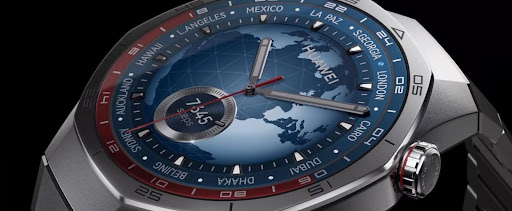Smartwatches have become more than just a trendy gadget; they are a pivotal part of the sustainable living movement. These versatile devices bring a host of eco-friendly features to the table, making it easier for individuals to lead a greener life. With everything from energy-efficient displays to digital health tracking, smartwatches are reshaping how we think about sustainability. This article will explore the various ways in which Smartwatch UAE contributes to sustainable living, focusing on their eco-friendly features, waste reduction capabilities, health and fitness promotion, and their role in green initiatives.
Eco-Friendly Features of Smartwatches
Energy-Efficient Displays and Battery Life
Smartwatch producers are continually refining their designs to balance high functionality and energy efficiency. Modern smartwatches use energy-efficient OLED or e-ink displays that consume far less power than traditional LCD screens. Moreover, intelligent power management systems optimize battery life, allowing the watches to last longer between charges. This minimizes the environmental impact associated with frequent charging and battery disposal. Some brands are investing heavily in creating smartwatches that offer extended battery life through renewable energy sources, such as solar charging options, reducing reliance on non-renewable energy.
Sustainable Materials in Construction
The smartwatch industry is aware of its environmental influence, opting for more sustainable materials in the manufacturing process. Recycled aluminum, biodegradable plastics, and environmentally certified leather are becoming standard. For instance, brands such as Huawei are increasingly using recycled metals and plastics while also exploring plant-based materials. This transition not only reduces the carbon footprint associated with material extraction and processing but also opens the door for materials that can either be recycled or decomposed naturally, further reducing environmental impact.
Smartwatches and Waste Reduction
Reducing the Need for Multiple Gadgets
One of the most significant contributions of smartwatches to sustainable living is their ability to consolidate multiple functionalities into one device. No longer do individuals need separate gadgets for fitness tracking, navigation, or cell phone notifications. Smartwatches combine these functionalities and more, cutting down the production and disposal of multiple electronic devices. This integration leads to less electronic waste and fewer resources used in producing additional gadgets, aligning perfectly with the principles of a circular economy.
Minimizing Paper Waste through Digital Health Tracking
Another way smartwatches help the environment is by reducing our reliance on paper. Many smartwatches come equipped with health tracking capabilities, such as heart rate monitors, sleep tracking, and activity logs. These features eliminate the need for paper-based records or printouts, enabling users to sync their data with apps and cloud storage. With digital health tracking, medical practitioners can access patient data online anytime, reducing the need for printed medical records and minimizing paper waste, a compelling step toward a paperless future.
Promoting Health and Fitness for a Sustainable Future
How Health Data Encourages Sustainable Living
The health-tracking features of smartwatches not only promote individual well-being but also have broader ecological benefits. By monitoring vital health metrics, users can make informed decisions about their lifestyle choices, leading to healthier living habits. Healthier individuals tend to adopt more sustainable practices, such as consuming organic foods, reducing waste, and minimizing their carbon footprint. Additionally, the ability to monitor and improve personal health can decrease dependency on healthcare facilities and resources, indirectly reducing the environmental impact of the healthcare industry.
Supporting Eco-Friendly Transportation Choices
Smartwatches also play a pivotal role in promoting sustainable transportation options. Many smartwatches feature GPS and mapping functions that provide users with the best routes for walking, cycling, or using public transportation. These functions encourage eco-friendly commuting choices that reduce the carbon footprint associated with vehicle emissions. Brands like HUAWEI integrate features that allow users to track their biking or walking routes while providing insights on their environmental impact. Promoting active travel not only supports personal health but also aligns strongly with global carbon reduction goals.

Integrating Smartwatches into Green Initiatives
Smartwatches’ Role in Carbon Footprint Reduction
Smartwatches can be integrated into broader green initiatives to significantly impact carbon footprints. By participating in carbon offset programs, and promoting energy conservation and waste reduction, these devices can be transformative tools. Some smartwatch models offer applications that track and offset carbon emissions, providing users with real-time insights on their daily activities’ ecological impact. This makes it easier for individuals to participate in carbon reduction programs and contribute to sustainability efforts.
Collaboration with Sustainable Brands like Huawei
Several smartwatch brands are partnering with eco-conscious companies to amplify their sustainability efforts. For example, Huawei has collaborated with Green initiatives, incorporating eco-friendly practices into their product lines. These collaborations extend to packaging, promoting recycling, and using less harmful materials throughout their supply chain. This synergy between technology and sustainable practices ensures that smartwatches are not only advanced but also responsible, setting an industry standard that supports eco-friendly innovation.
Conclusion
Smartwatches are proving to be invaluable allies in the journey towards sustainable living. Through eco-friendly features, waste reduction, health and fitness promotion, and integration into green initiatives, these devices offer substantial contributions to environmental conservation. As technologies evolve, the emphasis on sustainable practices continues to grow, demonstrating the potential of smartwatches to support and enhance a greener future. Embracing these wearable technologies can lead us down the path of sustainability, urging other sectors to follow suit.



































